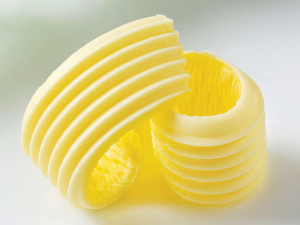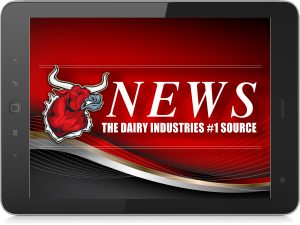Learn about the USDA’s proposed changes to the Federal Milk Marketing Order. What do these updates mean for dairy farmers and the industry? Check out key insights and reactions below.

Imagine a sector where little legislative changes affect millions of customers and producers. This is the domain of dairy. Recent suggestions for the Federal Milk Marketing Order (FMMO) system by the USDA have attracted much attention. A pivotal hearing in Indiana in late autumn and early winter covered many dairy industry issues. The USDA’s new 600-page proposal calls for changes to modernize the FMMO. This paper dissects these important suggestions and their possible influence on the dairy sector. Why is this relevant to you? These developments could impact milk prices and marketing in the United States, influencing processors, farmers, and the dairy products you buy. Still under examination are several industry players like the American Farm Bureau Federation and the American Dairy Coalition. Knowing these developments helps one have an insightful analysis of the dairy industry’s direction.
Navigating Dairy’s Bedrock: The Evolution of the Federal Milk Marketing Order System
Since the 1930s, the Federal Milk Marketing Order (FMMO) system has been a pillar of the US dairy sector. Designed under the Agricultural Marketing Agreement Act of 1937, it sought to guarantee fair prices for dairy farmers and balance milk markets. It helps to create a transparent and stable milk market even as it develops to meet new demands.
At first, FMMOs set minimum milk prices depending on use, creating controlled settings to protect consumers and farmers from price volatility. This guaranteed fair returns for farmers and a consistent milk supply for processors. This arrangement has helped control underproduction and overproduction, preventing sharp price changes.
By controlling the supply chain from farm to table and promoting economic stability in the agricultural sector, FMMOs help regional markets. Fair milk pricing across different locations helps to minimize inequalities and guarantees that even less competitive places are still fit for dairy production.
Efforts to modernize FMMOs continue to update them to meet technical developments in dairy production and present issues. FMMOs are vital in maintaining the financial viability of the dairy industry by improving milk composition standards and pricing policies.
The USDA’s Proposed Updates Aim for Modernization and Fairness
The USDA’s proposed changes aim to modernize the Federal Milk Marketing Order (FMMO) system, ensuring it stays fair and relevant for today’s dairy market. Here are the fundamental changes:
- Milk Composition: Adjust protein levels from 3.1% to 3.3%, other solids from 5.9% to 6.0%, and nonfat solids from 9.0% to 9.3%.
- Cheese Price Reporting: Remove 500-pound barrel cheese prices from the Dairy Products Mandatory Reporting Program survey.
- Make Allowances: Increase allowances for cheese, butter, nonfat dry milk, dry whey, and butterfat recovery.
Stakeholders’ Initial Reactions: Weighing in on USDA’s FMMO Proposals
Stakeholders are reviewing the USDA’s proposed Federal Milk Marketing Order system revisions. Before speaking, critical organizations such as the American Farm Bureau Federation, Wisconsin Farm Bureau, and American Dairy Coalition give much thought to the plan. Laurie Fischer of the American Dairy Coalition raised a significant issue: the possible vote exclusion of sure farmers.
Edge Dairy Farmer Cooperative and the National Milk Producers Federation both recognize the work behind the initiative. Leaders like Tim Trotter value the thorough attention paid to market studies, written replies, and testimonies. Stakeholders are evaluating the suggested changes’ overall possible effects and fairness.
Voices in the Balance: Voting Eligibility and Representation Concerns
One issue is voting eligibility for the ultimate package. American Dairy Coalition member Laurie Fischer worries that farmers whose milk isn’t pooled under the federal decree won’t be allowed to vote. This regulation raises questions about fairness and might silence numerous producers.
Tim Trotter, CEO of Edge Dairy Farmer Cooperative, shared these same worries. He underlined the necessity of a few days to review the report carefully. He questioned the present voting rules, highlighting the importance of inclusive decision-making.
One must carefully balance thorough representation with a simplified voting system. Organizations like the Wisconsin Farm Bureau and the American Farm Bureau Federation are currently evaluating the ideas; voting rights will probably remain a major topic of debate.
Industry Reactions: Diverse Opinions and Appreciations on USDA’s Proposed Changes
“This rule would bar producers from voting unless their milk is pooled in the federal order, raising fair representation issues for farmers,” Laurie Fischer from the American Dairy Coalition said of voting eligibility.
Edge Dairy Farmer Cooperative CEO Tim Trotter said, “We need a few days to review the report thoroughly, but appreciate the AMS team’s extensive effort in compiling all testimony, responses, and market analysis.”
These points of view reflect the many perspectives in the dairy sector, the need for thorough analysis, and the involvement of stakeholders as the USDA implements its recommendations.
National Milk Producers Federation Embraces USDA’s FMMO Updates with Cautious Optimism
The proposed USDA amendments excite the National Milk Producers Federation (NMPF). With his optimistic view, NMPF President and CEO Gregg Doud honored the diligence behind these suggestions. “We are glad to see much of what we suggested included in the USDA’s Federal Milk Marketing Order modernization plan,” Doud added. This answer shows that NMPF is dedicated to a fair and contemporary FMMO that advances the dairy industry.
USDA’s Proposals: A Comprehensive Overhaul with Potential Industry-Wide Impacts
The suggested modifications by the USDA will affect the whole dairy sector.
Refined milk composition elements would help manufacturers improve milk quality and value. However, issues about voting rights might cause more small, non-pooled producers to be overlooked.
Processors may respond differently. Eliminating 500-pound barrel cheese pricing from surveys would streamline reporting, but more allowances translate into more running expenses. Until retail prices increase or efficiency improves, this might strain profits.
Higher manufacturing costs might cause dairy product consumers to pay a premium. However, they could savor more nutrient-dense and better-tasting milk options.
Seeking justice and openness, these suggested improvements seek to modernize the Federal Milk Marketing Order system. The influence will rely on the balance of healthy interests among several sectors.
The Bottom Line
The USDA’s suggested modifications to the Federal Milk Marketing Order system, which address the technical and democratic sides of the dairy supply chain, are a significant step towards modernizing dairy sector rules and guaranteeing a fair market. These adjustments include adjusting milk composition parameters, changing allowances, and considering voting exclusions.
Reactions among stakeholders are varied. While some value the careful study, others worry about farmer representation and voting eligibility. Reflecting years of policy discussion and testimony, these improvements are not just regulatory changes but might also change the dairy business’s economic environment.
The USDA seeks to establish a more open and effective system that benefits consumers and farmers. All industry views must be listened to to guarantee that the final regulation serves the larger society. Stay active, provide comments, and get in touch with your neighborhood dairy groups. Your participation depends on writing a sustainable future for dairy farming.
Key Takeaways:
- The USDA has proposed changes to the Federal Milk Marketing Order system aiming to modernize and ensure fairness.
- Adjustments include changes in milk composition factors and an increase in make allowances for Class III and Class IV dairy products.
- Removal of 500-pound barrel cheese prices from the Dairy Product Mandatory Reporting Program survey is proposed.
- Stakeholders, including major dairy organizations, are still reviewing the recommendations before commenting.
- Voting eligibility concerns arise, particularly around the rule barring producers from voting unless their milk is pooled in the federal order.
- The National Milk Producers Federation shows hope, reflecting the results from extensive policy development and stakeholder input.
- This overhaul could have significant and wide-ranging impacts across the dairy industry.
Summary:
The USDA has released its recommendations for changes to the Federal Milk Marketing Order system, which includes adjustments to milk composition factors such as protein, other solids, and nonfat solids. The document also proposes removing 500-pound barrel cheese prices from the Dairy Product Mandatory Reporting Program survey and raising Class III and Class IV make allowances for cheese, butter, nonfat dry milk, dry whey, and butterfat recovery. Many dairy stakeholders, including the American Farm Bureau Federation, Wisconsin Farm Bureau, and the American Dairy Coalition, are still reviewing the proposals before commenting. One concern is the question of who farmers will get to vote on the final package, as the rule would bar producers from voting unless their milk is pooled in the federal order. The National Milk Producers Federation President and CEO Gregg Doud expressed hope that much of their proposed changes will be reflected in the USDA’s recommended Federal Milk Marketing Order modernization plan.
Learn more:
- USDA Proposes Return to ‘Higher-Of’ Method for Fluid Milk Pricing: What It Means for Dairy Farmers
- Is 2024 Shaping Up to Be a Disappointing Year for Dairy Exports and Milk Yields?
- Navigating the Waves: Dairy Producers Defy Challenges to Keep Barns Full Amid Soaring Milk Prices and Adverse Conditions





 At the Chicago Mercantile Exchange, it was another record down day for nonfat dry milk. The rest of the dairy markets were mostly steady or higher. The exception was the December Class III milk futures which closed down $.10 at $15.51. January milk was up $.20 closing at $14.70. February was up $.14 at $14.50. March was up $.07 closing at $14.52. The rest of the 2018 milk futures were all up.
At the Chicago Mercantile Exchange, it was another record down day for nonfat dry milk. The rest of the dairy markets were mostly steady or higher. The exception was the December Class III milk futures which closed down $.10 at $15.51. January milk was up $.20 closing at $14.70. February was up $.14 at $14.50. March was up $.07 closing at $14.52. The rest of the 2018 milk futures were all up. In June last year, butter prices on the Global Dairy Trade auction hovered about US$3000/tonne; the last auction on May 16 saw butter price reach nearly US$5500/t.
In June last year, butter prices on the Global Dairy Trade auction hovered about US$3000/tonne; the last auction on May 16 saw butter price reach nearly US$5500/t. Class III milk futures at the Chicago Mercantile Exchange were mostly higher, with the most active months seeing a slight bounce from the recent losses. January was up $.01 at $16.75, February was $.01 higher at $16.58, March was up $.06 at $17.04, and April was $.06 higher at $17.34.
Class III milk futures at the Chicago Mercantile Exchange were mostly higher, with the most active months seeing a slight bounce from the recent losses. January was up $.01 at $16.75, February was $.01 higher at $16.58, March was up $.06 at $17.04, and April was $.06 higher at $17.34. USDEC offers a preview of the new year, identifying the factors that will shape U.S. dairy export opportunity.
USDEC offers a preview of the new year, identifying the factors that will shape U.S. dairy export opportunity. With cheap grain for feeding and a growing export market, US dairy farmers are looking forward to a strong 2017.
With cheap grain for feeding and a growing export market, US dairy farmers are looking forward to a strong 2017. In Class III trade at the Chicago Mercantile Exchange, milk futures were higher, bouncing back from a couple of mixed, mostly lower, sessions, supported by good demand expectations. December was up $.02 at $17.34, January was $.24 higher at $17.19, February was up $.19 at $17.33, and March was $.14 higher at $17.49.
In Class III trade at the Chicago Mercantile Exchange, milk futures were higher, bouncing back from a couple of mixed, mostly lower, sessions, supported by good demand expectations. December was up $.02 at $17.34, January was $.24 higher at $17.19, February was up $.19 at $17.33, and March was $.14 higher at $17.49. AMF index Up 2.9%, average price US$5,500/MT
AMF index Up 2.9%, average price US$5,500/MT
 The overall Price Index at the Global Dairy Trade (GDT) auction climbed 11.4 per cent this week, its largest increase since August, according to UK levy board AHDB Dairy.
The overall Price Index at the Global Dairy Trade (GDT) auction climbed 11.4 per cent this week, its largest increase since August, according to UK levy board AHDB Dairy. The latest NZX futures market points to an 8-10% rise in whole milk powder (WMP) prices at tomorrow’s Global Dairy Trade auction, New Zealand bank ASB has said.
The latest NZX futures market points to an 8-10% rise in whole milk powder (WMP) prices at tomorrow’s Global Dairy Trade auction, New Zealand bank ASB has said. Dairy markets have continued their positive trend this week, with prices for nearly all commodities lifting.
Dairy markets have continued their positive trend this week, with prices for nearly all commodities lifting. In Class III trade at the Chicago Mercantile Exchange, milk futures were mostly higher with the most active months responding to the Global Dairy Trade numbers. August was down $.01 at $16.99, September was $.17 higher at $17.39, October was up $.21 at $17.11, and November was $.15 higher at $16.75.
In Class III trade at the Chicago Mercantile Exchange, milk futures were mostly higher with the most active months responding to the Global Dairy Trade numbers. August was down $.01 at $16.99, September was $.17 higher at $17.39, October was up $.21 at $17.11, and November was $.15 higher at $16.75.




